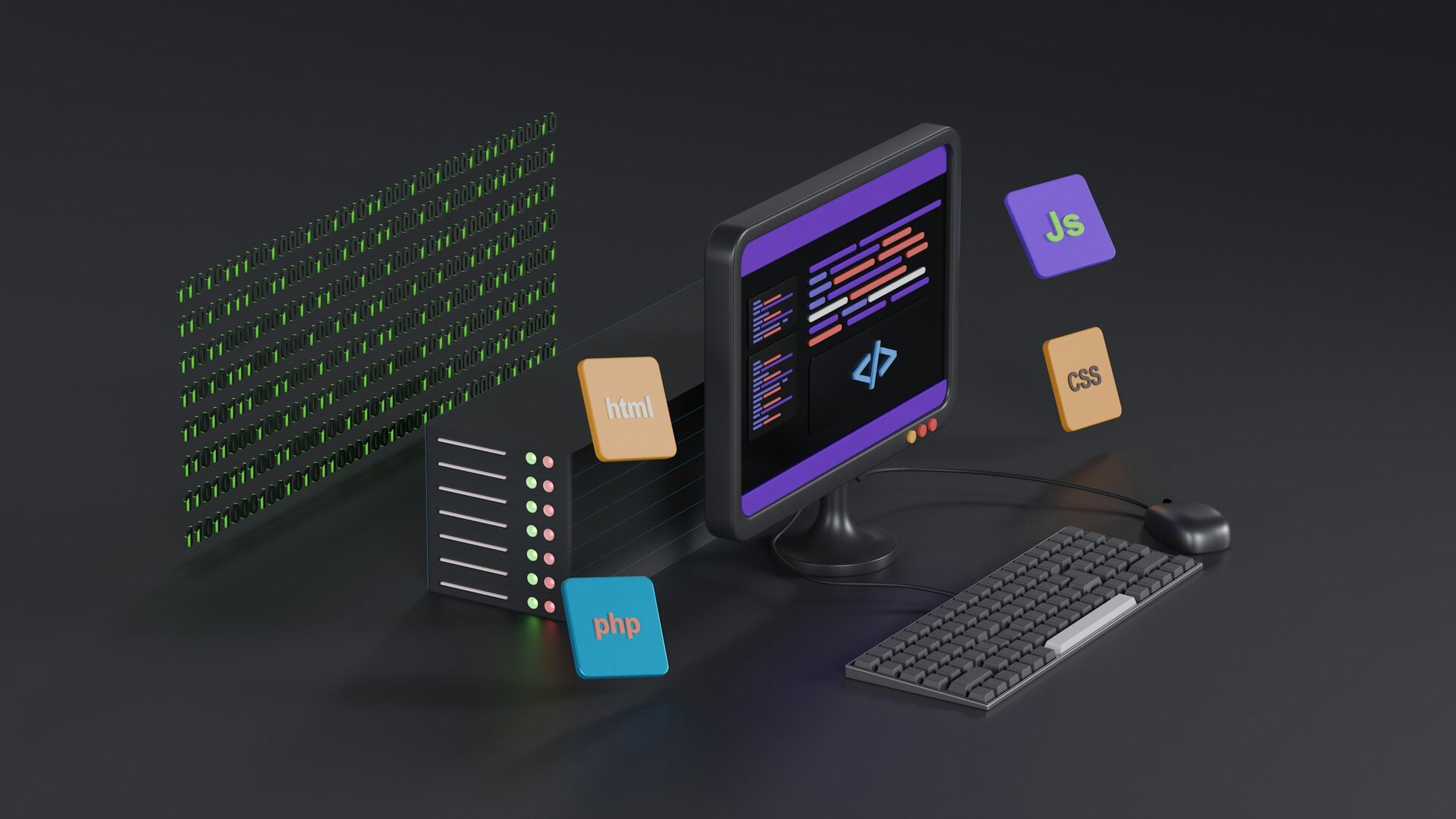Web development experiences continuous rapid advancement in its current state. Web developers together with software engineers need to maintain a forward position because businesses now need complex digital solutions which scale efficiently. Staying relevant and competitive demands that one understands the leading software development trends of the present time.
New web development technologies like artificial intelligence integration and low-code tools transform software design and construction methods and maintenance practices. The rapid changes in development across industries push businesses to select experienced web development partners, such as Clockwise Software, that can assist organizations with advanced technology adoption for delivering significant digital products.
The success of SaaS platform development or legacy system optimization demands continuous observation of web development trends. The article explores the dominant software development and web development patterns which will shape the future starting in 2025 and extending to beyond.

1. AI and Machine Learning Integration
Modern web applications require Artificial Intelligence (AI) as their fundamental base instead of being a simple buzzword. The year 2025 marks a significant milestone for AI technology because it will deliver direct user experiences instead of limited backend data processing.
AI-powered chatbots and customized content suggestions along with smart search capabilities have become standard elements in modern web applications. The Gartner research indicates AI will handle 80% of customer service tasks by 2026. The transition to AI integration becomes simpler for developers through investments made by Google and Microsoft using their TensorFlow and Azure AI tools.
The implementation of machine learning models alongside AI APIs by web developers enables substantial improvements to app performance alongside better user engagement and operational efficiency. The decision to use AI is no longer in question but how well you can implement it effectively has become the priority.
2. Low-Code and No-Code Development
The software development landscape experiences a major disruption because low-code and no-code platforms have emerged as dominant trends. The tools provide developers alongside non-technical users with the capability to create operational apps through simplified coding requirements.
OutSystems along with Bubble revolutionize development through fast prototype creation and deployment functionality. The evolution of developer roles includes shifting from detailed component coding to designing efficient system architectures and integrations.
The companies Siemens and Adidas use low-code strategies to speed up their digital projects through enterprise ecosystem integration.
3. Progressive Web Apps (PWAs)
Progressive Web Apps represent a development between native mobile apps and responsive websites as they continue to grow in popularity. PWAs provide offline access and push alerts and quick page loading without needing app store installation.
The trend offers exceptional value to areas with unstable internet connections. The implementation of PWAs by Starbucks and X (former Twitter) enhances both user accessibility and keeps users engaged. Mobile devices surpassed 58% of global website traffic during 2024, thus making PWAs essential for future web development.
Developers who want to build PWAs need expertise in service workers and caching strategies as well as responsive frameworks which are fundamental building blocks of modern web development.
4. API-First Development
The rise of microservices together with headless CMS architecture has led to API-first development becoming a fundamental practice. Developers now create APIs as foundational elements in their development process to achieve scalable and maintainable solutions with consistent platform compatibility.
The omnichannel reality demands API-first development because it supports seamless interactions between users and brands across websites and mobile apps and smart devices and wearables. Swagger and Postman tools serve as critical elements for efficient planning and testing as well as documentation of APIs.
The approach helps teams work together better which leads to quicker delivery times and reduced integration complications.
5. Cybersecurity as a Priority
Security stands as an essential element which should not be added later in the software development process. Data breaches have become both more common and expensive, according to IBM because they reached $4.45 million on average, so security needs to be incorporated at every development stage.
Secure coding practices along with end-to-end encryption and static code analyzers are now mandatory for developers to implement at development stages. The shift-left movement which requires security assessment at development’s initial phase has become a standard industry approach.
Apple and Meta along with other major tech companies have dedicated substantial funds to privacy and security which drives the entire industry to elevate its standards. Small teams and startup companies need to implement these practices because they establish user trust and fulfill regulatory standards.
6. Cloud-Native Development and Edge Computing
Cloud-native development exceeds basic cloud hosting because it enables applications to use containerization and microservices alongside CI/CD pipelines for building scalable and resilient applications.
AWS alongside Google Cloud and Azure Platforms have established the foundational standards for cloud-native services. Docker and Kubernetes maintain their position as leaders for managing applications based on containers. The forecast from IDC shows that cloud-native digital services will compose 90% of all new services developed by 2025.
Edge computing has proven itself as an essential component that supports cloud services operations. Developers use this technology to process data near users thus minimizing latency while delivering improved performance to applications requiring speed such as video streaming and gaming and IoT.
7. Serverless Architecture
Through serverless computing developers gain infrastructure management freedom which enables them to concentrate on coding and functionality development only. The event-triggered AWS Lambda and Azure Functions enable developers to execute backend operations automatically while scaling according to demand.
The cost-efficient nature of this model suits sporadic workload patterns and quick experimentation needs. Startups and agile teams achieve faster market entry because serverless architectures provide them with essential benefits.
The modern developer maintains serverless computing as a fundamental tool for their operations since it serves as an essential tool for rapid innovation combined with cost efficiency in their work.

8. Jamstack and Headless CMS
The Jamstack architecture that combines JavaScript with APIs and Markup has become popular because of its excellent performance and scalability together with developer-friendly design features. The combination of headless CMS with Jamstack enables users to handle content management in flexible ways and obtain fast frontend speed.
Contentful and Strapi along with Sanity serve as popular platforms which transform content delivery across digital products. Nike together with Peloton adopted Jamstack architectures to maintain high-performance web operations while achieving speed and design quality.
The necessity of decoupled systems has become essential because digital experiences now require omnichannel personalization at every step.
9. Real-Time Web Applications
Modern web applications rely on real-time interactivity for their definition which includes collaborative tools such as Google Docs and live streaming platforms like Twitch.
The combination of WebSockets and server-sent events together with WebRTC technologies enables real-time data transfer between servers and clients. These applications become simpler to develop through the use of frameworks like Socket.IO and SignalR.
The growing need for immediate responses in customer support and gaming and finance sectors has made real-time functionality evolve from optional to mandatory.
10. Sustainability and Green Coding
Software development has become more sustainable because digital infrastructure uses increasing amounts of energy. Green coding requires developers to enhance their code for power reduction and eliminate unnecessary operations while selecting sustainable hosting platforms.
Google and Intel have launched green software development programs which focus on decreasing carbon emissions throughout their operations. Developers should write efficient algorithms together with optimizing asset delivery methods while selecting energy-efficient frameworks only when necessary.
Sustainability has moved beyond its status as a corporate social responsibility checkbox because it affects purchasing decisions and drives both compliance policies and long-term development strategies.
Final Thoughts: Adapting to the Future of Web Development
Web development trends for 2025 will be defined by quick technological changes along with changing user requirements. The modern web development landscape transforms software creation through AI integration alongside cybersecurity measures and low-code platforms and real-time applications.
To achieve competitiveness both developers and organizations need to maintain awareness and adaptability. Through ongoing proactive efforts and continuous approach improvements you will meet current development challenges while anticipating future opportunities.

